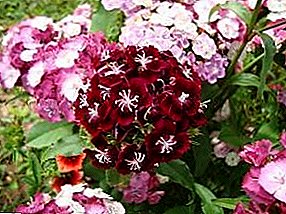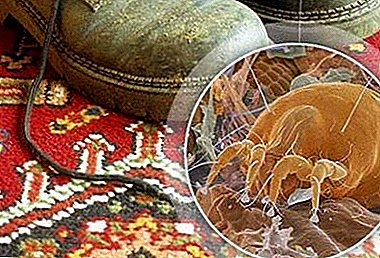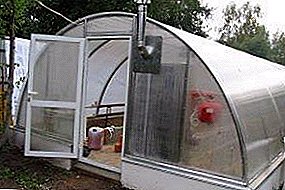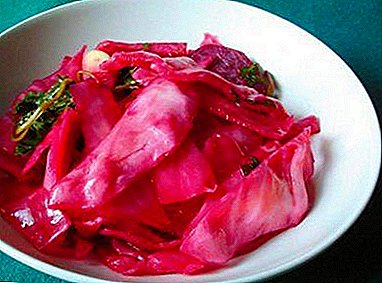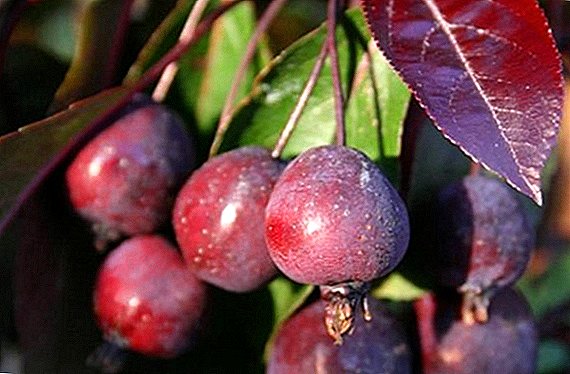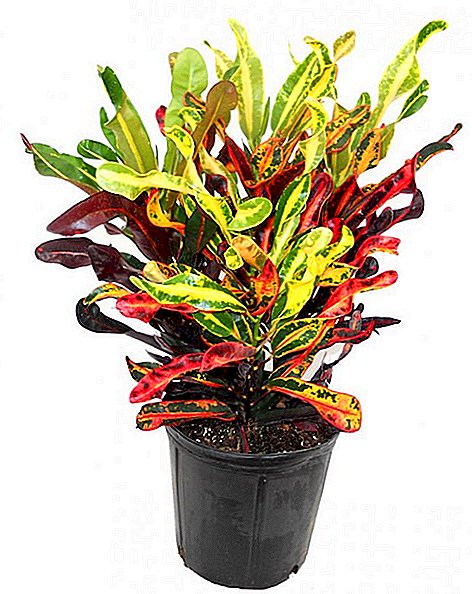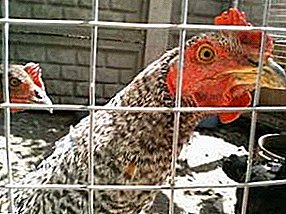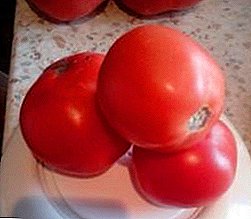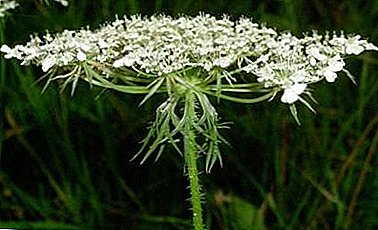
Disappointed in the crop grown on the seeds bought, many vegetable gardens are trying to plant their own. And often do not know how to do it.
Therefore, we have collected the most useful information so that you do not make mistakes and get an impressive result.
There are early, mid-season and late varieties of carrots. This instruction is suitable for any of them, if we are not talking about harvesting for winter stocks, etc.
How to grow your own seeds?
Benefits

- Obtaining seed in large quantities, with a shelf life of 2 to 4 years.
- Harvesting seeds of the required varieties.
- Own seed material - a guarantee of good quality and the maximum shelf life.
- Planting is simple to easily grow a large crop.
- Growing your seeds you save on import purchases.
- Carrots perfectly adapt to planting conditions where its seeds grew. Imported varieties lack such advantages, despite promises of high yields.
- We monitor the proper storage of root crops, which directly affects their ripening.
- When buying imported seeds, there is always the risk of substitution by other varieties.
disadvantages
- Some varieties of carrots can be resistant to flowering, which would entail the absence of seed.
- Having a complete and correct set of preparatory actions does not guarantee the flowering of carrots.
- Caring for carrots affects its quality, therefore, from a potentially healthy and vitamin-rich product, it can turn into a plant, the frequent use of which is harmful to health.
- Independent mixing of varieties leads to a loss of crop quality.
When to plant roots to get seeds?
- Carrots - a plant of two seasonal. And the seeds we get next year.
- Preparing a place for spring planting starting in the fall, filling the beds with humus or rotted compost, and poor soil for minerals is fertilized with all of the above and with a hall from spring.
Instructions: how to plant?
Preparatory stage for the first year

- Selecting varietal carrot seeds. Hybrid marked on the package with the inscription F1. The second soon begin to degenerate. Maintaining loose soil and lack of weeds is an important factor in carrot care.
- We plant it in areas rich in sunlight, with no shadow.
- We grow carrots before the arrival of frost, then we dig out. To maintain the properties of seeds from year to year, it is necessary to choose the right roots.
- We draw attention to the compliance of the varietal form - straight, bright, juicy, without damage. This can be done in the spring by checking their storage resistance.
- We cut the tops, keeping the tops from where the leaves grow, there are also buds-germs next year.
Special storage conditions:
- We descend to spring in a cool cellar with a temperature of + 1-2 ° С.
- Store preferably in rows in a wooden or plastic box, separate from carrots for food.
Soil preparation:
While the root crop is stored, we begin to prepare the next spring garden bed in the fall, filling it with humus or compost.
In the second year
The carrots we have preserved do not tolerate cold, so it’s worth waiting until the third decade of May to warm the soil from 10-15 ° C.
Inventory
For the work we need:
- rake;
- shovel;
- pegs;
- gauze or agro-fiber with a density of 20 g / m;
- support for foliage of seed plants to 1 meter.
Growth Material
Root crops without damage preserved from last year.
The soil
- Carrots absorb everything that you feed it, so manure cannot be used as fertilizer. It also increases the level of acidity in the soil, which will be detrimental to the root crop.
- If you have a high acidity of the soil, it must be reduced. This process can take 3-4 years.
- To check the acidity, you can use 9% edible vinegar, dropping it on the ground. At low acidity bubbles will appear or hissing.
Process

- In May, we are preparing a garden bed for planting vegetables. We dig up and level the land with a rake without the use of fertilizers. We stick the pegs where we want to plant roots and grow seeds to maintain vegetation as they grow.
- We make the holes with a depth equal to the volume of the root, pour the bed with warm water and pour a handful of humus there.
- Put one root in a hole, sprinkle with earth and gently knead it. Plant vertically or slightly tilted, leaving the head at ground level.
- Re-water our landing.
- We make mulching - we fill the soil with sawdust, hay or dry grass 6-7 cm on the surface of the soil around the carrot.
The benefits of mulching are that we spend less time on watering, plowing the land and cleaning the weeds. Dry grass and hay after harvesting remains in the soil after a land digging and serves as its fertilizer and fertilization. We dry the grass for a couple of days, then lay them out.
Care
- If there are yellowish leaves, we sprinkle them with earth to protect from the sun.
- The area is better to fence support, because the leaves will germinate up to 1 meter in height and the emerging inflorescences will be able to keep on it.
- If there are two or more varieties of carrots growing nearby, in order to avoid accidentally pollinating them with each other or with wild crops, close them with a light, airy and translucent material. Suitable gauze or agro fiber that we have prepared. It should be removed after flowering.
- After 2-3 weeks with the appearance of thick greens, we water the plant with lime milk. To do this, add water to the lime until it becomes milk-like in its consistency. This contributes to the strengthening of root crops, protecting them from diseases and for the health of seeds.Top dressing of a soil by a limy milk and organic fertilizers occurs at various times. This reduces the amount of nitrogen required by plants.
- At the end of irrigation, we mulch the soil around the testes to reduce the effect of temperature drops on the fetus.
- Sometimes in the first year, instead of a root crop, a spike grows, which makes the carrot unsuitable. This is facilitated by many factors: cold spring, cold soil, seeds of over-pollinated sowing carrots with wild, etc.
To determine that the carrot begins to bloom is simple. From mid-June to mid-July, umbrellas appear at the top, which is the norm only in the second year.
How to avoid premature flowering?

- When purchasing seeds, it is necessary to look for varieties with resistance to flowering, among such are Vitamin, Canned, Nantes 4, Incomparable, Cold-Resistant19.
- Seeds should be no older than 2 years.
- Carefully screen them before sowing.
- The best predecessors of carrots in the garden are cabbage, tomatoes, cucumbers, potatoes.
- When the temperature drops, the bed will save the film.
- It is better to grow carrots between plants with lighthouses, this will simplify the care of inter-mediums. Best suited: lettuce, radish, garlic and legumes, while avoiding parsley, horseradish and beets with celery.
- Thinning of seedlings in order to avoid thickening of sowing is carried out 3-4 times for the entire period of their growth.
- Regularly fallow, instead of daily small portions.
- Excessive fertilizer and fertilizing promotes flowering.
- During heavy rains it is better to cover the crop in order to avoid the bay.
How to collect good stuff?
Collection term:
- The seeds will bloom for a long time, in the period from July 25, umbrellas colored with brown color, an indicator of maturity.
- Collection takes place until August. If there is a rapid cooling and umbrellas do not have time to get the desired color, then until September 20, we hang them in the attic with a draft.
Umbrella preparation and seed collection:
- Mature umbrellas are cut as they grow along with the stem 20-25 cm. They grow at different times, so we cut them in 4 runs.
- In parallel with the cutting, the collected umbrellas are dried in the dark.
Seed production:
Dried umbrellas are put in bags and gently stretch your hands, wipe through a 3-5 mm sieve, removing any debris.
Appearance:
Carrot seeds are very similar to parsley seed, so be careful. Distinctive features of carrot seeds - they are small, brown with white fibers.
Selection of suitable and unsuitable seeds:
In winter, before spring planting, we check the seeds for their suitability. Different varieties are kept apart from each other. Soak them in a light solution of potassium permanganate. Sometimes stir and so dead seeds will float, while good seeds will sink to the bottom.
What should be the storage conditions?

- Keep the seeds in a dark, lack of moisture, place, it is better in bags of cotton fabric. Cardboard boxes are also suitable.
- It is strictly impossible to use plastic bags and plastic containers. In this case, the amount of intake air needed by the seeds will be small, which will contribute to the appearance of mold.
- The ideal moisture level for storing carrot seeds is 10-11%, temperature is 10-12 ° C.
- You can keep them from 2 to 4 years.
- Once a month we air the seeds, just open the box and shake.
How to use in the future?
In addition to the opportunity to grow a quality crop, carrot seeds can be used to treat many diseases, due to the content of essential oils. With contraindications, be careful and consult a specialist.
Following our recommendations from year to year, it will be easier for you to go through these steps and you will begin to receive a rich harvest.


